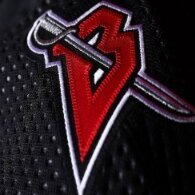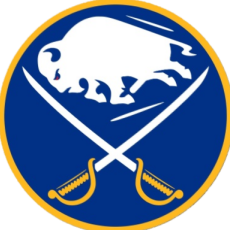Overview
About This Club
Reference and discussion place for any and all analytic and predictive computational tools used in hockey analysis, whether they be raw, adjusted, derived, or processed.
Location
United States
- What's new in this club
-
lowsabre joined the club
-
triumph_communes joined the club
-
For reference: There are statistics that teams can keep and people measure which may or may not be useful. I have no problem with someone having their own numbers to track that s/he thinks are useful. However, the most common advanced stats are that common for pretty good reasons: they are easy to measure and serve as a solid proxy for important parts of the game that correspond to winning. As we noted, based on simple raw numbers and on the most common advanced stats, there was no excuse for Botterill to have wasted Pegula's money on Frolik and Simmonds, let alone have Thompson and Mittlestadt in the NHL yet, and really devalues getting Sobotka and, to a lesser extent, Berglund in the ROR steal deal. For those with inside information better than mine, how much of the analytics side was Botterill using invalid statistics, rationalisation for a bad move, or just plain ignorance that led to the ignoramus-like moves? For everyone, what are some statistics and/or representations of data that you believe are largely valid? I am here to learn and understand what people think on a myriad of topics related to the numbers.
-
Brawndo joined the club
-
IKnowPhysics joined the club
-

Data Collection
Marvin replied to SwampD's topic in Hockey Statistics -- Reference and Discussion's Topics
I figure this is like this tracking the stock market and such. You can't track everything, so you try to determine what the most relevant facts are that you can easily collect. Then you make a model using whatever methods are relevant and at your disposal. Aside on modelling - When I took engineering modelling in college, my prof explained models this way: You can have several models of a tree. You can have a pre-schooler draw a tree which has a brown or grey trunk and a tuft of green that is supposed to be the leaves. You then have that of an amateur artist which has the raised ground for the roots, some extra lines drawn in the trunk for the bark, slightly irregular shaping to the trunk, some branches below the leaves, and the leaves being a bit more individualised within a large green area. Lastly, you have a professional artist draw a generic tree with all the nuance and detail to make it individual. In real life, we use use the pre-schooler's model and hope to get the kindergarten version before it gets too complex. -
matter2003 joined the club
-
LGR4GM joined the club
-
darksabre joined the club
-
Charts and graphs have become ubiquitous here at SabreSpace, which is fine, but people seem to have a blind faith in their accuracy. With the amount of data being collected, how is it done and by whom? Are there firms with twenty or so employees sitting around, rewinding playback machines with stopwatches in their hands working for each team? To me, it seems like it would take one person an entire day, if not more, to analyze a a single aspect of a single game. Just wondering.
-
SwampD joined the club
-
steveoath joined the club
-
North Buffalo joined the club
-
Samson's Flow joined the club
-
These are the fun stats, where we can measure greatness and incompetence. Many of these have obvious variations which I will not bother to enumerate here. Team Devastation Rating (good teams): Team Goal Differential / League Average Goal Differential Team Devastated Rating (bad teams): League Average Goal Differential / Team Goal Differential Individual Player Presence (think of this as "lone wolf" situations): rate of stat when player is on the ice / team's rate of stat without that player on the ice. So when you see that the Sabres' numbers all congregate in a tiny area near "BAD" on a chart with either Vladimir Sobotka or Tage Thompson, but they players' performance away from those two go all over the bloody map, you know they suck. Conversely, you get a very good idea of how much better the team has been with the addition of Jeff Skinner. You also find out how disastrous the Scandella-Ristolainen defence pair was. Without each-other on the ice, Scandella was at least a #6-8 D-man and Risto was in the #3-5 range. Put them together and you have, um, magic, I guess. Prorated Scoring seasons: Adjust goals and assists in all seasons to put all of the individual and team stats onto a uniform scale against the NHL historical average. Until the DPE, this was 1972-3. Now the historical average is 2006-7.
-
- 1
-

-
Crucial Situations Originally Created: Early 1980s Creators: Roger Nielson, Al Arbour, Emile Francis, Jeff Z. Klein, Karl Eric-Reif, writers for the old hockey annuals Inspiration: Find out who the Joe Schlabotniks are who score goals in borderline irrelevant situations, make spectacular saves when the game is out of hand, etc. Logic: Track who is making key plays that preserve leads or tie games How to Measure It: What you measure and how you use it varied wildly from statistician to statistician. I will concentrate on tying or go-ahead goals, although you can do a lot more than this Examples: Cruicial scoring Goals and assists scored when tying the game or gaining the lead. Crucial +/- A player's plus-minus stats during crucial situations. Crucial Perseverance rating Which goaltenders are not allowing "the next goal." Adjustments and other examples: Who is put on the ice defencively in crucial situations Who is put on the ice offencively in crucial situations Who gets the puck out of the defencive zone after a crucial defencive zone start Who gets into the offencive zone when down 1 or tied. Who makes these plays in the 3rd period At the time of the creation of this stat, 70% of 3rd period leads were "safe". Performance in this part of the game was often called "critical" Defencive players who start a shift against a top offencive line. Goaltenders who replace injured goaltenders and do not have a back-up.
-
Adjusted Plus-Minus Originally Created: Late 1970's Original Creators: Lou Nanne, Emile Francis, and others Inspiration: Try to get players on good teams and bad to be measured on the same relative two-way scale. Logic: How do we determine players on bad teams who are actually performing well, but are dragged down by lousy team-mates? Conversely, who on good teams is actually performing poorly because his team-mates inflate his raw numbers? How to compute it: There were actually 3 versions of this stat. Original Background: Easiest Used by Emile Francis and Lou Nanne to help evaluate player assignments, roles, etc. Allegedly pioneered in the 1950's (!) by Anatoli Tarasov, Arkady Chemyshev, Vsevolod Bobrov, Boris Kulagin, and Viktor Tikhonov -- even before the NHL adopted +/-. Computation Add up the raw +/- stats for a given team. Call that PM_total Divide PM_total by the number of skaters required to dress for a game. Call that PM_ave In the 1970's, when this was developed, that number was 16. Now, it is 18. For each player on the team who have played a "statistically significant" number of games, take his raw +/- and subtract the PM_ave. That is his original adjusted +/- Depending on whom you ask, this could be anywhere from 30 to 60. I personally say "half a season". First Revision Background: Some extra complexity Appeared in The Hockey News about 1980; introduced by Jeff Z. Klein and Karl-Eric Reif Was apparently used as far back as 1973 by Fred Shero and Joe Crozier Computation Each time a goal is scored on the ice, if the situation is one where you count a plus or minus, take the reciprocal of the number of players on the ice and multiply it by +1 (GF) or -1 (GA). This is PM_per_player for each player on the ice. Normal Simplification: Just assume 5 players on the ice, which is typical. Note that without this simplification, goals in 3-on-3 OT are over-valued somewhat. Add PM_per_player over the entire season for the entire team. This is the PM_ave. Also, for each goal where plus-minus applies, add the PM_per_player for each applicable player's adjusted plus-minus. This is PM_player_raw. For each player, subtract the PM_ave from PM_player_raw. This is his adjusted plus-minus. Second Revision Background: Add more situational understanding Pioneered by Viktor Tikhonov. Computation: Use any of those above. Adjustments: Do not include empty net goals. At the time, ENG outnumbered goals scored by the team that pulled the goaltender something like 30-1, so it inflated plus figures for defencive forwards and deflated plus figures for scoring players. Weight complete gaffes against specific players who screwed up, such as a defenceman coughing the puck up to an opposing forward in the slot and "crucial goals". Advantages: Fairly easy to derive from the raw data at the end of the year; easy to see when a player has played enough games to warrant this extra scrutiny; allows for underrated players to shine (e.g., Bill Hajt) and finds over-rated players relative to their peers (e.g., Ramsay-Luce-Gare were a better checking line than anything involving Bob Gainey!). Disadvantages: Still kind of crude; does not do as good a job finding good players on bad teams as it should (e.g., Ron Stackhouse); allows really good players to buoy the statistics of team-mates (e.g., Dallas Smith had the good fortune to be partnered with Bobby Orr and then Brad Park).
-
Goaltender Perseverance ratings: (Save pct *6 + average shots against / game) / 0.6 Created: 1981 Creators: Hockey News Writers Jeff Z. Klein and Karl-Eric Reif Inspiration: Avoid using GAA for comparing goaltenders because good goaltenders on bad teams look worse than bad goaltenders on good teams. Logic: Save Percentage is generally a more predictable long-term, team-independent statistic than GAA. Add in the shots against per game to measure workload; thus the same save percentage for a goaltender on a weaker team that surrenders more shots will show a higher perseverance rating and therefore better performance. Advantages: First goaltender stat to try to rate goaltenders by combining personal performance and workload; found goaltenders who were over-rated by GAA who were terrible but played on very defencive teams. (Prototype: Pete Peeters later in his career) Disadvantages: Rated all shots equally; proportions were derived to rescale goaltenders to the THN staff's perceptions and evaluations. (Prototype: Tom Barrasso early in his career) Common Adjustments: Varying the dependence on the shot rates; incorporating shot difficulty; incorporating situational issues, such as a two-man advantage.











